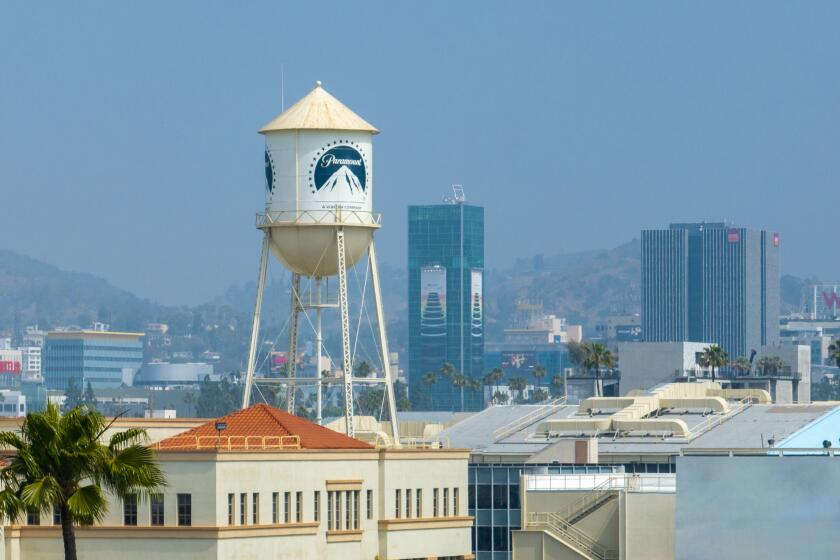Indigenous Art Gets Notice Abroad
- Share via
ALICE SPRINGS, Australia — The aboriginal artists of Australia have taken “Cultural revival is survival” as a motto, and lately, they are surviving very well.
The largest collection of aboriginal art ever assembled, acquired at the cost of $54 million, will begin a European tour this year in Duesseldorf, Germany, then go to Paris; Basel, Switzerland, and Rotterdam, Netherlands. Other exhibitions have been hits in New York and London.
Artists talk of expressing their “aboriginality” and furthering political goals, in addition to strengthening and purifying ties with their ancestors, traditions and land.
Aboriginal culture, at least 30,000 years old, was being smothered by the forced assimilation imposed by the Europeans who settled Australia. A turnaround began in 1967, with a referendum that granted civil rights to aborigines, and art teacher Geoffrey Bardon is credited with spurring it on.
In 1971, Bardon was assigned to Papunya, an aboriginal community the government created west of Alice Springs, in what is called Australia’s Red Center.
“What would have been warring tribes were brought together,” said Roslyn Premont, co-director of the Gallery Gondwana in Alice Springs. “The despair of being stuck there, bored silly and realizing their culture was in danger of being lost must have been tremendous.”
Teen-agers had little interest in Bardon’s project to create decorative murals on the bare outside walls of Papunya’s only school, but many adults became interested in painting. For them, the act became a celebration of the “Dreamtime,” the aboriginal belief system about creation.
They painted images, some as large as 1,100 square feet, that had begun centuries ago as designs for communication and rituals.
“They would clump materials together in damp dirt,” Premont said. “Creating patterns from dots, called stippling, is the closest thing to that traditional method.”
As word spread and outsiders started buying the paintings, the movement fed off itself.
“It was like a fever,” Premont said. “Papunya became a hive of activity. They started painting on everything, from Masonite to cardboard.”
Each artist is allowed to depict only his or her own “Dreaming,” which may relate to an animal, plant or event. Some symbols represent people or animals, others mean water holes or other features of the land.
“Some people will only have a couple of things of which they can paint variations,” Premont said. “As you become more senior, you earn greater responsibility and the rights to more things.”
Ironically, Bardon has criticized current paintings as “toys for the white fella.”
“They have become decorative, and this disqualifies them from being regarded as serious art,” he said after viewing two major additions to the Australian National Gallery in Canberra, the capital.
Bardon does not criticize the artists, who he said are merely meeting the market demand, earning much-needed money for their large, impoverished extended families and calling attention to their plight.
Premont moved to Alice Springs six years ago to manage a government-run gallery, one of only two galleries then operating in the town.
Now, aboriginal art is sold throughout the small-business district in places ranging from tourist shops that deal in relatively cheap paintings, crafts and souvenirs to galleries like Premont’s that offer the best work.
Artists drop in occasionally to work or engage in small talk with gallery owners, but usually are reticent around outsiders.
Typical of them is Dorothy Napangardi Robinson, who won the 1991 National Aboriginal Art Award for the best work in Western media. Her works hang in the National Gallery and have been bought by well-known foreign collectors.
She said she usually has a vision of how a painting will begin, and that her goal is to keep her “Dreaming” of the bush plum tree strong and pure.
Premont said aborigines want more control of their work and how it is sold, but that they need time to acquire the skills necessary to start a business and keep it running.
“The next generation will get fed up with the galleries taking commissions,” she said. “Maybe in 10 years, we’ll have a community- or aborigine-owned gallery.”
Some artists were exploited in the past, she said, but there is little chance of that now.
“This idea that an artist gets $200 for a painting that is then sold for $2,000 is outmoded,” she said. “One of the good things about more galleries is that, if artists don’t get the price they want at one place, they can go to the competition. The best artists are sought after and fought after.”
Forgery remains a problem. The artists have formed collectives that issue certificates of authenticity, but with so many working in similar styles, it is fairly easy for unscrupulous dealers to pass off fakes.
More to Read
The biggest entertainment stories
Get our big stories about Hollywood, film, television, music, arts, culture and more right in your inbox as soon as they publish.
You may occasionally receive promotional content from the Los Angeles Times.










